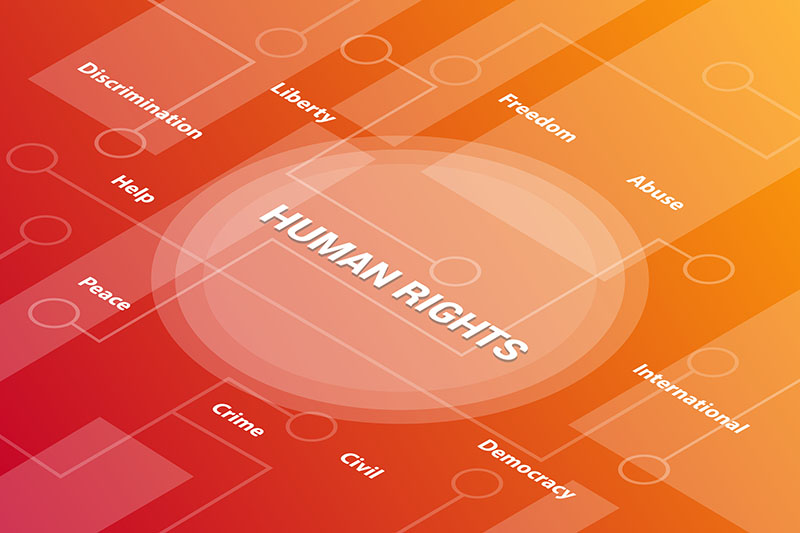As we noted in a recent blog post, slavery in global supply chains continues to be concern.
In this exclusive interview with Michael Ford, Avetta Global Expert on EHS and Sustainability, we learn more about this ongoing crisis.
Supply Chain Management Review: Where have researchers discovered the greatest abuse of labor most recently?
Michael Ford: The international Labour Organization (ILO) found the greatest abuse of forced labor is in the private sector. The ILO estimates 16 million people are exploited in areas such as domestic work, construction or agriculture.
SCMR: What industry sectors are most at risk?
Ford: The two biggest areas of forced labor or human trafficking are found in the consumer sector and construction related industries.
The consumer industry includes food-related products, manufactured goods like fast fashion and inexpensive imports. Generally if something is very cheap, it is not always because of efficient manufacturing process. This problem can be found in emerging economies but also in countries where it is not expected. Some examples include:
- pineapple industry in Australia
- nail bars in the U.S.
- car washes, spas, cosmetic establishments and food manufacturing in the UK
SCMR: Can you expand on your findings about construction?
Ford: Yes. Construction-related industries, does not just involve the actual building of things, but also sourcing or manufacturing materials used for construction. It can also include child labour.
The International Labor Organization (ILO) found the greatest abuse of forced labor is in the private sector. The ILO estimates 16 million people are exploited in areas such as domestic work, construction or agriculture.
The ILO confirmed exploitative labor practices have earned private businesses almost $150 billion in profits. The most profitable industries are likewise the most risky.
According to its report:
- $99 billion in profits for commercial sexual exploitation
- $34 billion for construction, manufacturing, mining and utilities
- $9 billion for agriculture, including forestry and fishing
- $8 billion dollars for domestic workers in private households https://www.humanrightsfirst.org/resource/human-trafficking-numbers
SCMR: How else can supply chain managers collaborate with suppliers to eradicate slavery?
Ford: Here is a simple process to remove modern slavery from your supply chain:
- Determine the values your business will uphold
- Find and choose suppliers to work with that hold the same values
- This visibility is gained through supplier prequalification questionnaires, where you are able to ask how suppliers respond to and avoid modern slavery among their workers and subcontractors
- Verify that the information they share in the prequalification process is correct
- This is achieved through supplier audits. This is where any information that that's too good to be true is revealed and scrutinized. Audits is one of the most effective tools for influencing change in the supply chain
- Lastly, supply chain managers should take an active role in understanding the lower tiers of their supply chain. Whether modern slavery occurs on the first level or the fifth, a business is still responsible for supporting the immoral practice. Getting that deeper visibility and scrutiny is crucial.
SCMR: Can you provide our readers with more details about what should be done?
Ford: First, managers need to acknowledge that slavery /human trafficking is potentially within their supply chain either domestically or internationally. Executives at the very top should create a policy statement that outlines actual actions that will be undertaken—not just warm words.
The policy should have actions that will be carried out but also have plans in place to mitigate what will happen if issues are actually found. Australia is now following a very good process developed in the UK. Australia also introduced a law requiring a corporate statement with actions to be taken to identify and remove slavery within the supply chain. These actions include increasing visibility by mapping suppliers, identifying 3rd parties who form part of the supply chain and conducting due diligence in real time.
Managers cannot just make a cosmetic assessment. Their statements will face great scrutiny and they will be caught very quickly. It is essential for managers to conduct objective analysis on suppliers at all levels within the supply chain.
Many companies focus upon the top levels but the greater risk is found in the lower levels of the chain where it can start and then fragment quickly to all international links.
An audit cannot be done in isolation but should be part of the journey. Actions have to start somewhere and it is important for the company to have a formal approach to determine what they will do and in what order.
This approach is especially important in locations where culturally-certain working practices are accepted. This means having education initiatives, robust recruitment checks and other standards before engaging an individual. It also requires having due diligence with all labor providers and training the purchasing staff how to recognize potential signs of slavery.
Finally, ensure pricing expectations are realistic because if the unit price is continually squeezed then the probability increases for forced labor. The sustainable level of a unit cost can and should be measured.
SC
MR


Latest Supply Chain News
- How CPG brands can deliver on supplier diversity promises
- How S&OP provides the answer to in-demand products
- AI, virtual reality is bringing experiential learning into the modern age
- Humanoid robots’ place in an intralogistics smart robot strategy
- Tips for CIOs to overcome technology talent acquisition troubles
- More News
Latest Podcast

 Explore
Explore
Business Management News
- How CPG brands can deliver on supplier diversity promises
- How S&OP provides the answer to in-demand products
- AI, virtual reality is bringing experiential learning into the modern age
- Tips for CIOs to overcome technology talent acquisition troubles
- There is still work to do to achieve supply chain stability
- Blooming success: The vital role of S&OE in nurturing global supply chains
- More Business Management
Latest Business Management Resources

Subscribe

Supply Chain Management Review delivers the best industry content.

Editors’ Picks





